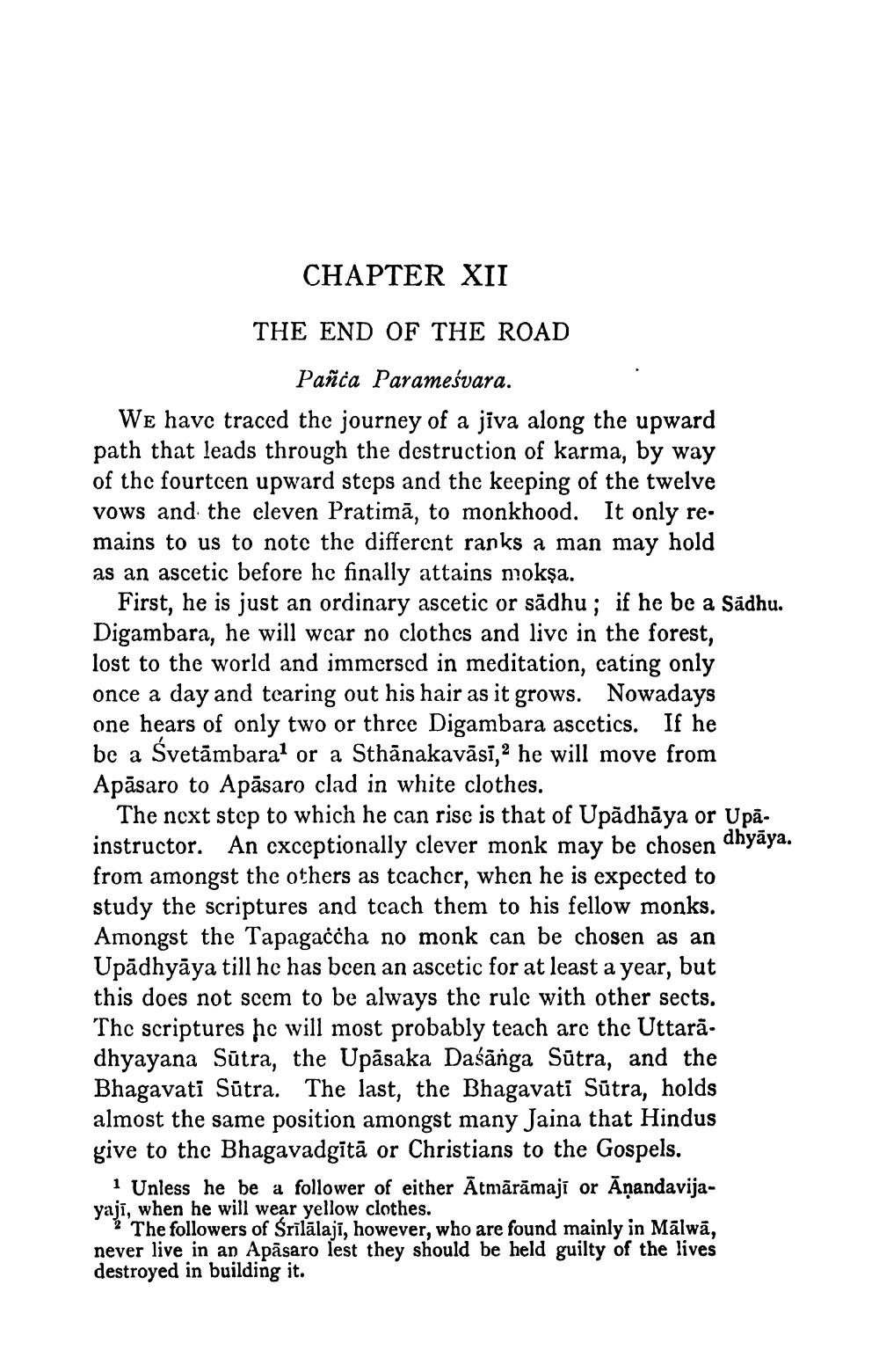________________
CHAPTER XII
THE END OF THE ROAD
Pañia Parameśvara. We have traced the journey of a jiva along the upward path that leads through the destruction of karma, by way of the fourtcen upward steps and the keeping of the twelve vows and the cleven Pratimā, to monkhood. It only re. mains to us to note the different ranks a man may hold as an ascetic before he finally attains mokşa.
First, he is just an ordinary ascetic or sādhu; if he be a Sadhu. Digambara, he will wcar no clothes and live in the forest, lost to the world and immersed in meditation, cating only once a day and tearing out his hair as it grows. Nowadays one hears of only two or three Digambara ascetics. If he be a Svetāmbaral or a Sthānakavāsi, he will move from Apāsaro to Apāsaro clad in white clothes.
The next step to which he can rise is that of Upādhāya or Upā. instructor. An exceptionally clever monk may be chosen dhyaya. from amongst the others as teacher, when he is expected to study the scriptures and teach them to his fellow monks. Amongst the Tapagaċċha no monk can be chosen as an Upādhyāya till he has been an ascetic for at least a year, but this does not scem to be always the rule with other sects. The scriptures he will most probably teach are the Uttarā. dhyayana Sūtra, the Upāsaka Daśānga Sūtra, and the Bhagavati Sūtra. The last, the Bhagavati Sūtra, holds almost the same position amongst many Jaina that Hindus give to the Bhagavadgitā or Christians to the Gospels.
1 Unless he be a follower of either Ātmārāmaji or Āņandavijayaji, when he will wear yellow clothes.
? The followers of Srīlālaji, however, who are found mainly in Mālwā, never live in an Apasaro lest they should be held guilty of the lives destroyed in building it.




